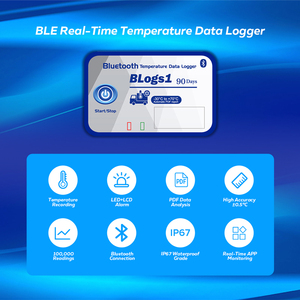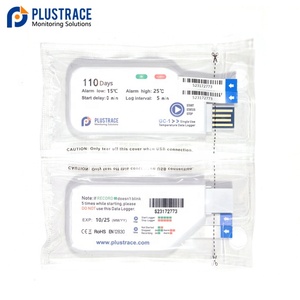Introduction to Temperature Recorder in Transit
A temperature recorder in transit is an essential device used to monitor and maintain optimal temperature levels for sensitive goods during transportation. This innovative technology ensures that products such as pharmaceuticals, food, and chemicals are preserved under appropriate conditions from the point of dispatch to the final destination. With the strict regulations and rising safety standards in various industries, investing in a reliable temperature recorder is paramount for businesses aiming to provide quality and comply with industry standards.
Types of Temperature Recorders in Transit
Temperature recorders come in various forms, each designed to meet specific needs in diverse environments. Understanding the different types can aid businesses in choosing the right solution for their transportation requirements:
- USB Temperature Data Loggers: Compact devices that record temperature data and can be easily downloaded to a computer for analysis.
- Wi-Fi Enabled Recorders: Include real-time temperature monitoring capabilities with alerts sent directly to your smartphone or email.
- Bluetooth Temperature Monitors: Enable easy data transfer and access through mobile applications, making it convenient for on-the-go monitoring.
- Single-use Temperature Labels: Adhesive labels that indicate temperature excursions through color-change technology, providing a simple, cost-effective solution.
Function and Features of Temperature Recorders in Transit
Temperature recorders in transit are designed with various functions and features to ensure accurate monitoring and data reporting. Here are the key functionalities:
- Accurate Temperature Recording: Provides precise temperature readings at scheduled intervals, ensuring that temperatures remain within defined thresholds.
- Data Logging: Stores historical data, making it easier to track temperature fluctuations and maintain compliance records.
- Alerts and Notifications: Sends alerts via SMS or email if temperatures exceed preset limits, allowing for immediate action to mitigate risks.
- Easy Installation: Typically designed for straightforward setup, requiring minimal training for users to initiate recording functions.
Applications of Temperature Recorders in Transit
The applications of temperature recorders in transit are widespread, impacting various industries that rely on temperature-sensitive products. Here are some notable use cases:
- Pharmaceuticals: Ensures that vaccines and medications are transported and stored at the correct temperatures to maintain efficacy and safety.
- Food and Beverage: Monitors conditions for perishable items like dairy, meats, and produce to prevent spoilage and comply with health regulations.
- Chemicals: Maintains proper temperature control for sensitive chemicals that may react or degrade if subjected to extreme temperatures.
- Logistics and Supply Chain: Facilitates compliance with temperature monitoring protocols, enhancing brand reputation and customer trust.
Advantages of Using Temperature Recorders in Transit
Investing in temperature recorders presents multiple advantages for businesses, ultimately contributing to better operational efficiency and customer satisfaction:
- Enhanced Product Safety: Minimizes the risk of temperature excursions that can jeopardize product integrity, thus protecting consumers and maintaining brand quality.
- Regulatory Compliance: Helps businesses meet industry-specific standards and regulations, avoiding costly fines and recalls.
- Improved Accountability: Offers transparent documentation of temperature data throughout transportation, fostering a culture of responsibility and diligence.
- Cost Efficiency: Reduces wastage and preserves valuable assets by ensuring products remain within required temperature ranges during transit.

































































































































































































